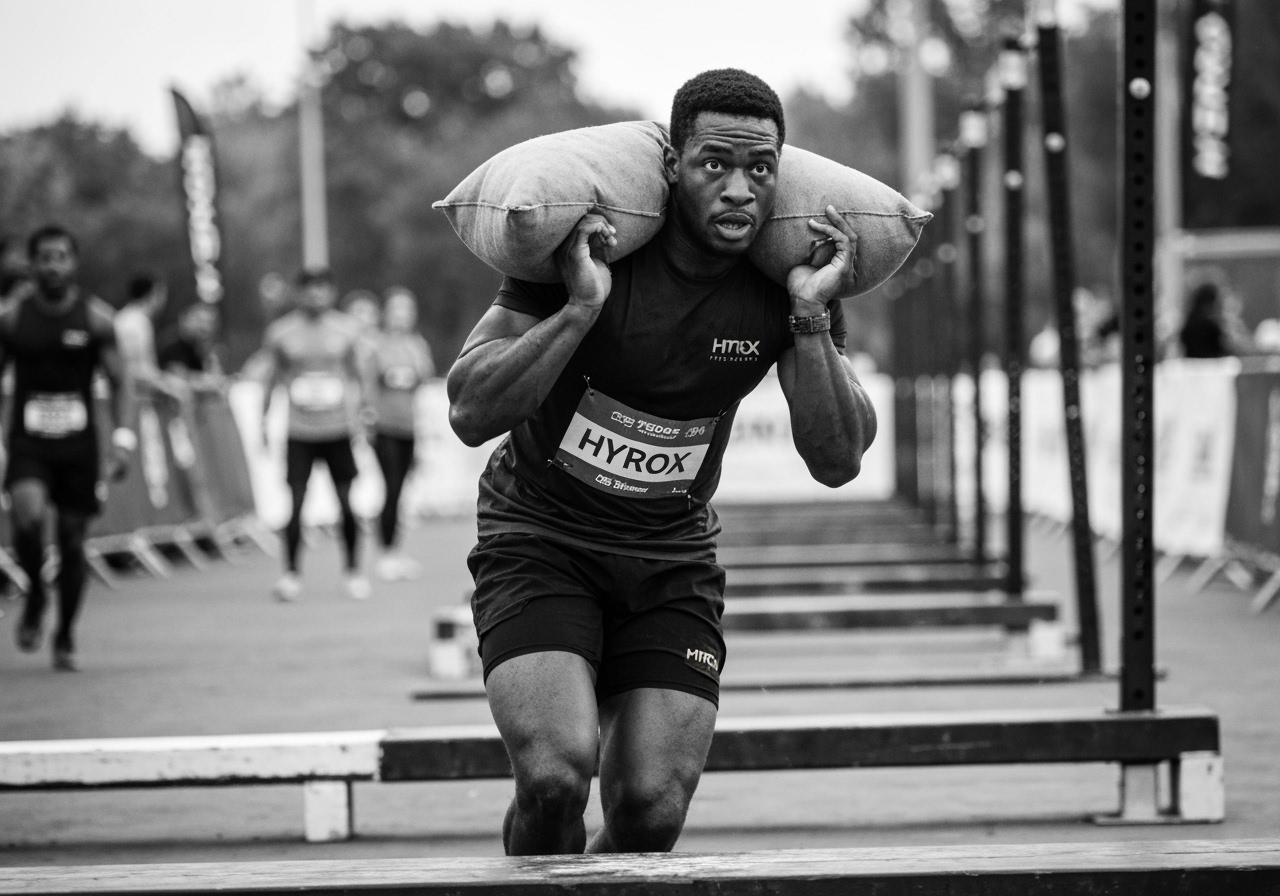
In HYROX, seconds matter. Whether you're running laps or grinding through burpees, rowing, or wall balls, one often-overlooked factor separates good athletes from great ones: breathing. Many competitors focus on strength and endurance but forget that respiration is the foundation that fuels both.
Why Breathing Is Your Secret Weapon
Breathing correctly during HYROX not only keeps oxygen flowing to your muscles but also improves your ability to transition smoothly between running and workout stations. Poor breathing leads to side stitches, early fatigue, and slower recoveries. The good news? With the right techniques, you can train your lungs as effectively as your legs.
This guide breaks down essential respiration strategies you can use to stay composed, maintain rhythm, and dominate your transitions in HYROX.

Why Breathing Matters in HYROX
Oxygen Efficiency
Every station taxes your body differently, but controlled breathing ensures your muscles get the oxygen they need to sustain performance.
Recovery Between Efforts
Breathing properly accelerates recovery when moving from a run into a strength exercise or vice versa.
Core Stability
Deep diaphragmatic breaths stabilize your torso, helping with form in exercises like sled push, burpees, or wall balls.
Mental Composure
Focusing on breathing reduces panic, regulates pacing, and keeps you in control when fatigue sets in.
Mastering respiration isn't just about endurance—it's about maximizing efficiency across all stations.
7 Respiration Techniques That Improve HYROX Transitions
1. Diaphragmatic Breathing (Belly Breathing)
Instead of shallow chest breaths, train your diaphragm to expand and contract fully. This increases oxygen intake and prevents the breathlessness that often kicks in mid-race.
How to practice:
- Lie on your back with a hand on your stomach
- Inhale deeply through your nose, feeling your belly rise
- Exhale slowly through your mouth
- In HYROX: Use belly breathing during runs to maintain a steady oxygen supply without wasting energy
2. Breathing Rhythms for Running
Matching your breath to your stride reduces side stitches and keeps cadence consistent.
- 2:2 rhythm: Inhale for two steps, exhale for two steps (best for steady runs)
- 3:3 rhythm: For slower paces or recovery jogs between stations
- Exhale on effort: Time exhales with the foot strike to manage core stability
3. Exhale on Exertion at Stations
Whether you're lifting a wall ball, driving a sled, or pulling on the rower, exhale during the hardest part of the movement.
Why: Exhaling on exertion stabilizes your core and prevents you from holding your breath (which spikes blood pressure and wastes energy).
Example: Exhale as you throw the wall ball upward, inhale as you catch and squat.

4. Box Breathing Between Stations
Transitions are where many athletes lose time. Instead of panicking, use controlled box breathing to reset.
Pattern:
Inhale for 4 counts → Hold for 4 → Exhale for 4 → Hold for 4
Application: As you enter the next station, one cycle of box breathing can calm your nervous system and prime you for the effort ahead.
5. Nasal Breathing for Recovery
When possible, breathe through your nose during low-intensity moments (like early laps).
- Why: Nasal breathing filters and warms air, encourages diaphragmatic engagement, and lowers heart rate
- When to use: Early runs or during post-effort jogs between heavy stations
6. Breath Ladder Workouts (Training Drill)
You can train your respiratory system just like your legs. A breath ladder forces controlled oxygen intake under effort.
Example drill:
- 1 burpee → 1 breath
- 2 burpees → 2 breaths
- 3 burpees → 3 breaths
- Continue climbing until failure
Result: Builds lung capacity and teaches you to stay composed under stress.
7. Mindful Breathing for Mental Control
Fatigue isn't just physical—it's mental. By anchoring focus to your breath, you avoid negative spirals in the middle of the race.
- Technique: Count your breaths during a run or row (e.g., 10 deep inhales/exhales, repeat)
- Effect: Creates rhythm, reduces panic, and keeps your pacing under control

Sample Warm-Up Breathing Flow for HYROX
Before your HYROX race or training session, spend 3–5 minutes practicing:
This primes both your body and mind for the intensity ahead.
Key Takeaways
- Controlled breathing enhances oxygen delivery, stabilizes your core, and improves recovery
- Use diaphragmatic breathing and rhythm strategies during runs
- Exhale on exertion to power through HYROX stations
- Train your breathing system with drills like breath ladders
- Apply calming techniques (box breathing, nasal breathing) in transitions to stay sharp
Breathing is often treated as an afterthought in HYROX, but it's the foundation that holds your performance together. By mastering these techniques, you'll not only cut down transition fatigue but also find yourself finishing stronger and faster.
Final Word
If you're serious about improving your HYROX performance, don't just train your muscles—train your lungs. Proper respiration makes every run smoother, every station more efficient, and every transition quicker. Practice these techniques in training until they become automatic, and you'll feel the difference on race day.